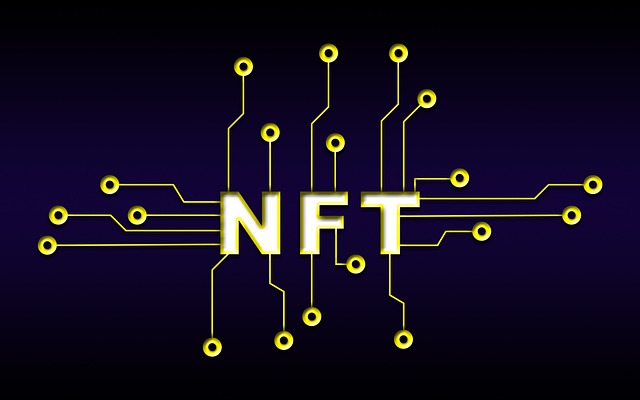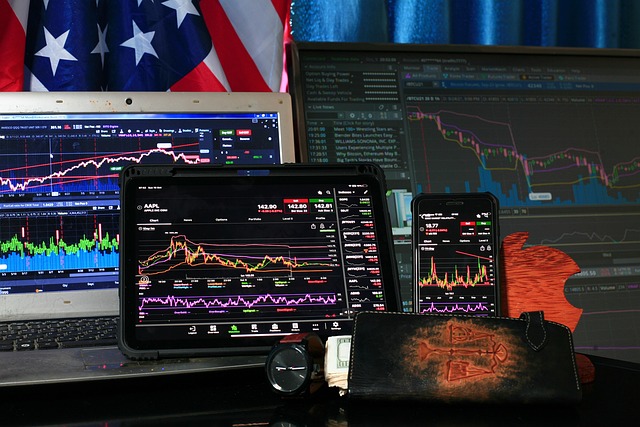Crypto Futures Trading Meaning and Insights for 2025: A Comprehensive Guide to Navigating the Next Era of Digital Asset Contracts
Author: Jameson Richman Expert
Published On: 2025-10-17
Prepared by Jameson Richman and our team of experts with over a decade of experience in cryptocurrency and digital asset analysis. Learn more about us.
Crypto futures trading has evolved into a cornerstone of the modern cryptocurrency ecosystem, especially as we approach 2025. These sophisticated financial derivatives allow traders to speculate on the future price movements of cryptocurrencies such as Bitcoin (BTC), Ethereum (ETH), and numerous altcoins without the need to hold the underlying assets directly. Crypto futures serve as versatile instruments for hedging, leverage, arbitrage, and portfolio diversification—appealing to both institutional giants and retail investors seeking to capitalize on the inherent volatility of digital assets. Mastery of crypto futures is no longer optional for serious market participants; it is essential for effective risk management, strategic positioning, and capitalizing on emerging technological and regulatory trends. This comprehensive guide delves into the mechanics, advanced strategies, risks, and the future evolution of crypto futures trading as we move into 2025 and beyond.

In-Depth Analysis of Crypto Futures Trading: Advanced Perspectives
Crypto futures are derivative contracts whose value derives from underlying cryptocurrencies, enabling traders to take leveraged positions based on expected future price directions. These contracts come in various forms, including traditional futures with fixed expiration dates—weekly, monthly, quarterly—and perpetual swaps, which have no expiry but incorporate funding mechanisms to tether prices closely to spot markets. These instruments are predominantly traded on platforms like Binance Futures, CME Group, Bybit, Bitfinex, and others, offering leverage ratios often exceeding 125x—magnifying both potential gains and risks.
Understanding the core mechanics involves familiarization with fundamental concepts such as margin (initial and maintenance), leverage ratios, contract expiration, and settlement procedures. For instance, traders often use high leverage to control large positions with relatively small capital, but this amplifies exposure to market swings, raising the risk of liquidation in volatile conditions. Successful navigation of crypto futures combines technical analysis (TA)—such as candlestick patterns, trendlines, support/resistance zones, RSI, MACD—and fundamental analysis (FA), including macroeconomic indicators, technological upgrades like network hard forks, on-chain metrics (hash rate, active addresses), and regulatory developments. Psychological resilience, disciplined risk management, and emotional control are critical, given crypto's susceptibility to sentiment-driven swings, news shocks, geopolitical tensions, and technological changes.
How Crypto Futures Work in Practice: Mechanics and Execution
Executing crypto futures involves detailed procedures facilitated by advanced trading platforms that provide robust interfaces, liquidity pools, and risk mitigation features. Traders initiate positions based on their market outlook—going long (buy) if expecting appreciation or short (sell) during anticipated declines. The use of leverage magnifies both profits and losses; therefore, prudent leverage management and position sizing are paramount. Typical order types include limit orders, market orders, stop-loss, take-profit, trailing stops, and conditional orders, which automate risk control and optimize trade execution.
Risk management is further enhanced by mechanisms such as insurance funds, auto-deleveraging (ADL), real-time margin monitoring, and liquidation protection protocols. For example, some platforms maintain insurance funds that absorb losses during extreme volatility, preventing insolvency for traders and maintaining platform stability. Additionally, traders are encouraged to utilize demo accounts—simulated trading environments—to test strategies without risking real capital. As the ecosystem evolves, integration of AI-driven analytics, machine learning algorithms, and adaptive risk management tools will likely become standard, offering enhanced precision and decision-making capabilities.
Risks and Rewards: Balancing the Volatility Spectrum
Crypto futures inherently involve high risk due to extreme volatility, leverage, and market unpredictability typical of digital assets. The allure of magnified gains must be balanced against the potential for rapid and significant losses, especially during sudden market reversals or flash crashes—phenomena that have historically shaken crypto markets. My own trading journey underscores that emotional discipline, strict adherence to a comprehensive trading plan, and proper position sizing are non-negotiable for longevity in this space.
Despite these risks, crypto futures provide compelling benefits: they enable effective hedging strategies against existing holdings, facilitate speculative leverage to amplify returns, and open avenues for complex strategies like arbitrage, calendar spreads, and options overlays. When managed diligently—leveraging real-time data feeds, employing disciplined risk controls, and maintaining a long-term perspective—these instruments can generate alpha and offer downside protection in turbulent markets. The key to sustainable success is balancing aggression with prudence, continuous education, and adaptability to market shifts and regulatory updates.

Advanced Trading Strategies for Consistent Profitability in Crypto Futures
Attaining consistent profitability in crypto futures requires a sophisticated approach that combines technical analysis, fundamental insights, and sentiment evaluation. Here are several advanced strategies I recommend for traders aiming for long-term success:
- Trend Following with Leverage: Utilize moving averages such as the 50/200 EMA, Fibonacci retracements, and volume confirmations to identify robust trend signals. Confirm entries with momentum indicators like RSI, MACD, or Ichimoku Cloud, and align trades across multiple timeframes—long-term and short-term—to enhance accuracy. Riding sustained trends with appropriate leverage can maximize gains while minimizing false signals.
- Hedging and Cross-Hedging: Protect large holdings or diversified portfolios by establishing offsetting futures positions during market downturns. Cross-hedging involves using futures of correlated assets—such as ETH futures to hedge a portfolio of altcoins—reducing overall exposure while optimizing capital efficiency. Employing dynamic hedge ratios based on on-chain analytics and correlation metrics enhances effectiveness.
- Spread and Calendar Arbitrage: Exploit price differentials between futures contracts with differing maturities or across exchanges. Calendar spreads—buying longer-dated futures while shorting nearer-term ones—capitalize on convergence or divergence trends, especially during high volatility periods or macroeconomic shifts. Monitoring basis (difference between spot and futures prices) provides additional trading signals.
- Sentiment and News-Driven Trading: Leverage social media sentiment analysis, regulatory news, macroeconomic reports, and blockchain metrics (hash rate, transaction volume, active addresses) to anticipate market moves. Combining quantitative signals with qualitative insights enhances predictive accuracy and responsiveness.
- Algorithmic and Quantitative Strategies: Deploy algorithms and trading bots tested against historical data, executing high-frequency arbitrage, market-making, or liquidity provision strategies. Continuous refinement of algorithms through machine learning and adaptive models ensures they evolve with market dynamics, maintaining edge and minimizing slippage.
A critical component of success is rigorous backtesting, meticulous journal keeping, and ongoing education to refine strategies. Integrating these advanced approaches with disciplined risk management fosters resilience and consistency, even amid unpredictable market shocks.
The 2025 Outlook: Opportunities, Challenges, and Technological Innovations
Looking ahead to 2025, the landscape of crypto futures trading is poised for transformative growth driven by technological innovation, regulatory maturation, and increasing institutional participation. Blockchain scalability solutions—including layer-2 protocols such as Optimistic Rollups and ZK-Rollups—will facilitate the deployment of more sophisticated, decentralized derivative products, including non-custodial futures markets and decentralized exchanges (DEXs). These innovations aim to reduce counterparty risk, enhance transparency, and improve accessibility for retail traders.
Regulatory clarity in major jurisdictions like the US, EU, and Asia will shape future market architectures. Expect the emergence of compliant, institutional-grade exchanges with higher leverage limits, rigorous risk controls, and investor protections. The integration of artificial intelligence (AI) and machine learning will become standard in real-time data analytics, predictive modeling, automated risk controls, and adaptive trading algorithms—offering traders significant competitive advantages.
Additionally, the growth of decentralized finance (DeFi) derivatives and tokenized assets will democratize access, enabling secure, transparent, and programmable trading environments for both retail and institutional participants. Challenges such as regulatory crackdowns, market manipulation, cybersecurity threats, and liquidity constraints will persist; however, ongoing innovations in security architectures, compliance standards, and decentralization will mitigate these risks effectively.
Conclusion: Navigating the Future of Crypto Futures in 2025 and Beyond
Crypto futures trading represents the cutting edge of digital asset investment—offering unparalleled leverage, hedging capabilities, and diversification opportunities. Nonetheless, success hinges on continuous education, disciplined risk management, and mastery of evolving technological tools. My experience underscores that adaptability, strategic foresight, and responsible trading practices are vital in this volatile yet lucrative domain.
As 2025 approaches, staying ahead of technological breakthroughs, regulatory developments, and market sentiment will be crucial. Leading trading platforms such as Binance, MEXC, Bybit, and Bitget are expected to enhance their offerings, making futures trading more accessible, secure, and efficient. Embracing these innovations—integrated with a disciplined, informed approach—will empower traders and investors to unlock the full potential of crypto futures, navigate the complexities of digital derivatives with confidence, and seize emerging opportunities in this dynamic landscape.